When I moved in to my house, the yard was a wasteland and the soil stony and filled with trash. Since growing things is one of my favourite activities, I got down to sieving the soil to get the basics of gardening in place. My suburb is one of the oldest in the city so all sorts of coins turned up while digging. The coins themselves are pretty well used and common so they aren't valuable even though some are more than 100 years old but they paint an interesting picture of the history of South Africa.
| Penny 1917, copper | Tickey 1920, silver |
|---|---|
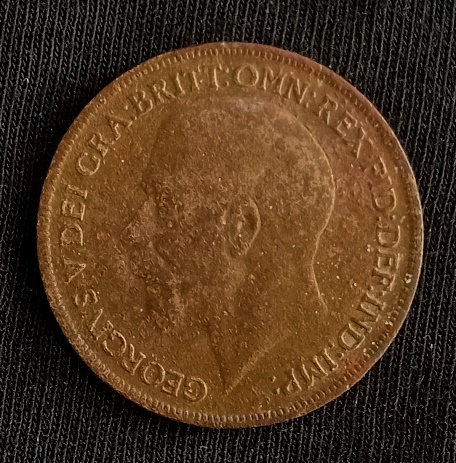 |
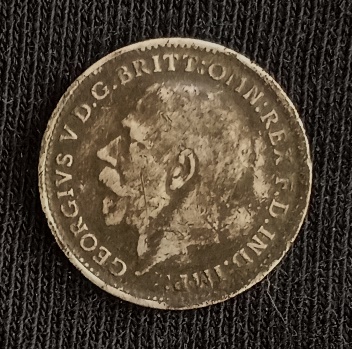 |
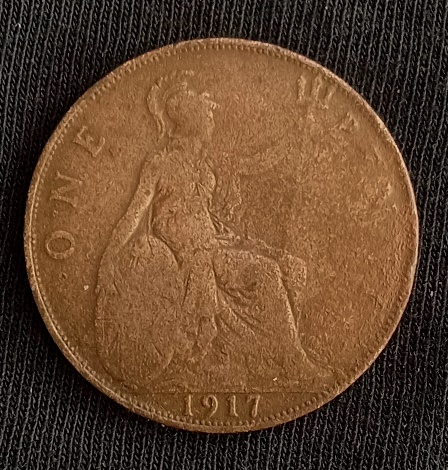 |
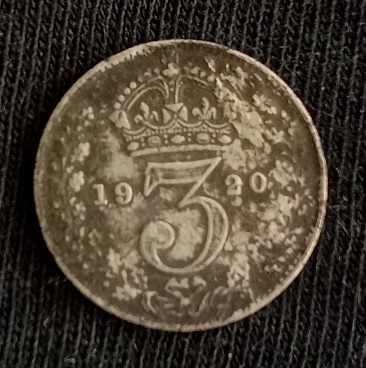 |
The oldest coins that I found in my soil are these British coins, a copper Penny from 1917 and a 1920 silver thruppence, which were called Tickeys here. George V had quite the moustache!
In the late 1800s, Britain had two colonies in the South and East and the Boers (Afrikaners) had two Republics in the North. Very large gold and diamond deposits were discovered in the Boer republics, leading to a gold rush and an influx of diamond diggers. Naturally, Great Britain soon decided to go to war over these resources. Two bitter guerilla wars were fought but eventually the British won and in 1910 all 4 territories were combined into the Union of South Africa and made part of the British Commonwealth. In 1923, a Royal mint started producing South African coins that had the heads of the king and queen of England, depending on the date, on one side and unique South African designs on the other.
|Quarter Penny 1955, copper|Tickey 1943, silver|Sixpence 1952, bronze|
|-|-|-|
|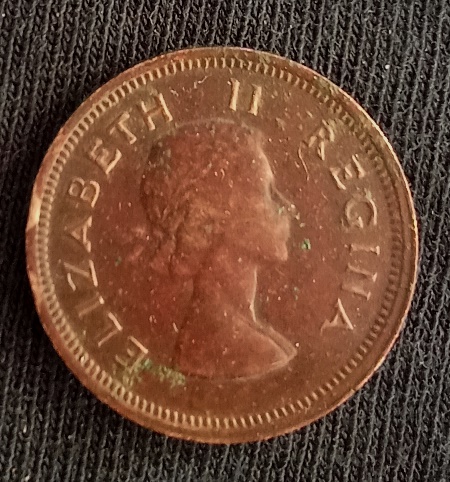 |
|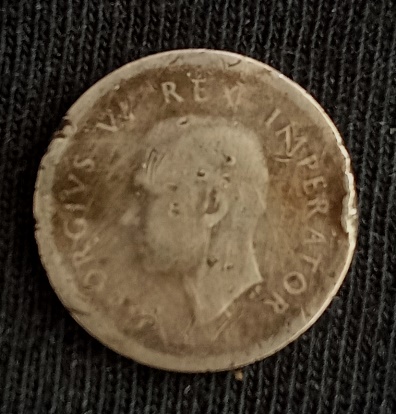 |
|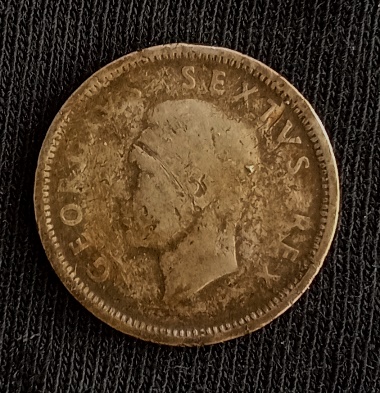 |
|
|
|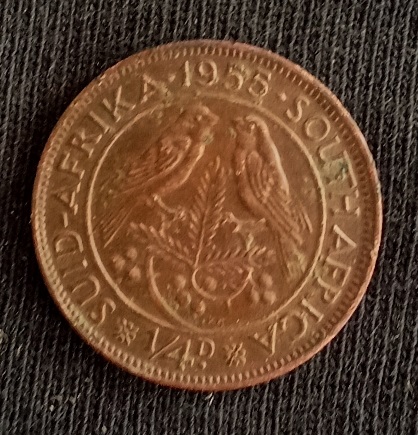 |
|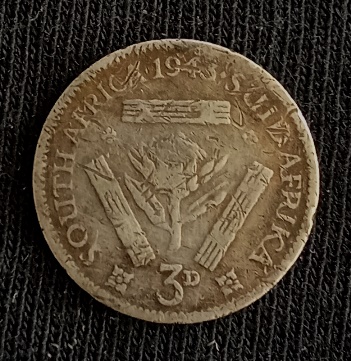 |
|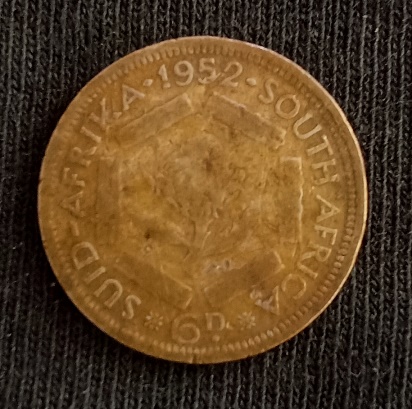 |
|
Quarter penny, Tickey, and sixpence with the heads of King George VI and Elizabeth II on them. The 3D and 6D coins are very worn but take note of the bundles of sticks on the coin. Each bundle represents a cent and the 4 sticks may denote the quarter denomination, since south Africa had quarter pennies at the time.
In 1948, an Afrikaner nationalist government came to power and in 1961, South Africa became a republic, left the commonwealth, changed to the decimal system and adopted a new currency, the Rand, with the new coins bearing the head of Jan van Riebeeck. 1961 is also the year that the Afrikaners implemented the grand project of Apartheid. Although segregation always existed, nationalist Afrikaners in power took it to the level of white supremacy.
| Sixpence became 5 cents | Silver, 1961 |
|---|---|
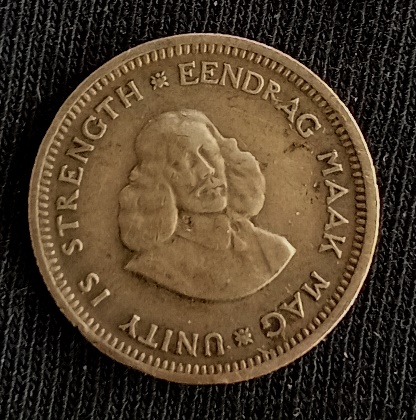 |
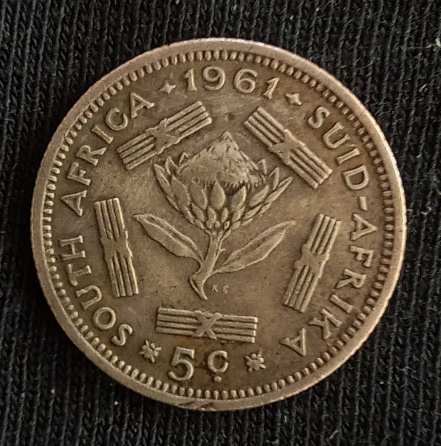 |
Van Riebeeck was the Dutch governor who established the first European colony at the Cape, although it was later sold to the British. Afrikaners are the descendants of these early settlers so it was very much a proclamation of of identity and direction. Notice also the bundles of sticks (fasces) - a symbol of political fascism from 1922, the year that Mussolini rose to power - and the motto "Unity is Strength". While Afrikaner nationalists admired fascist strongmen and there were Nazi sympathisers among them, the Nazi Germany connections were more rooted in grievances against Britain for the two local wars it had fought against them and many Afrikaner nationalists were against the idea of fighting on the Britain's side during both World Wars. As an aside, my maternal great-grandfather fought in the Boer war against Britain and against the Germans in East Africa during WWI. He lived to see WWII as well although he was an old man then.
The coins were changed again in 1965 to depict animals and plants (no more bundles of sticks) and in 1970 the head of Jan Van Riebeeck was replaced with either the South African coat of arms or the current head of state.
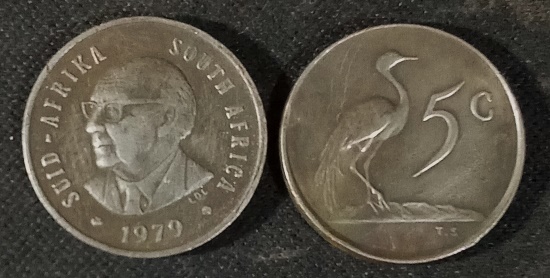 5-cent pieces depicting President Nico Diedrichs and the Blue Crane, our national bird.
5-cent pieces depicting President Nico Diedrichs and the Blue Crane, our national bird.
| Half Cent | Copper, 1970 |
|---|---|
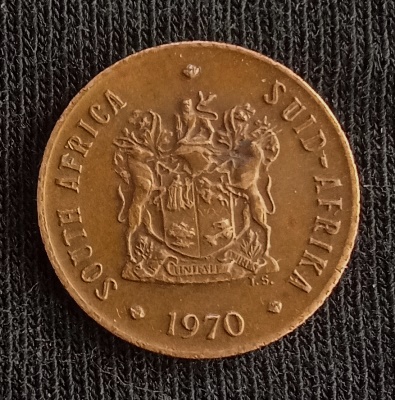 |
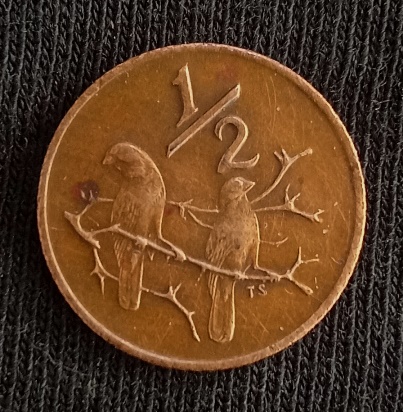 |
| A favourite from my childhood: half a cent, which was withdrawn sometime around 1980. I remember that you could buy a box of matches or a square of chewing gum with one. |
All of these coins are old but have survived for years in the soil. All I did was buff them with a soft scourer to remove the dirt. Nowadays, the coins we use just rust within a year.
Then these 2 also turned up in the soil:
|Heads is Copper|Tails is silver|
|-|-|
|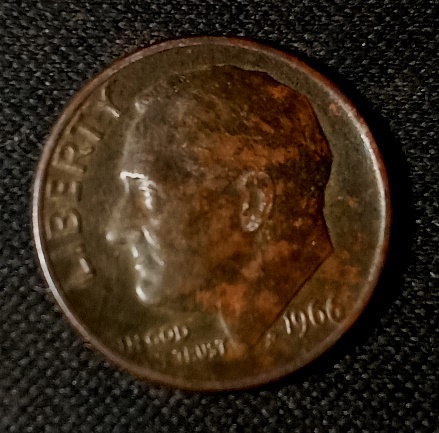 |
|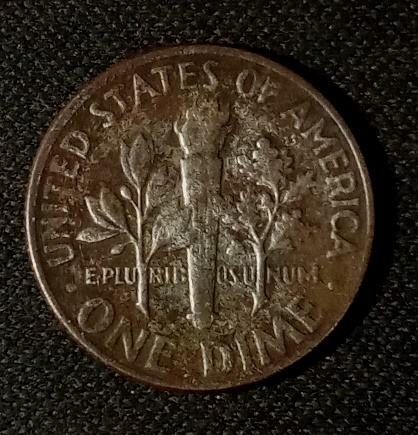 |
|
Considered an unusual coin because of the mix of metals, an American dime from 1966, apparently the head depicts Roosevelt.
A real surprise: a Soviet 3 Kopeck coin from 1961. How it ended up on a hillside in Johannesburg is anybody's guess because the area where I found it was public land so it could have been lost there by anyone, not just an inhabitant of my place. Relations between apartheid South Africa and the Soviets were distinctly frosty due to cold war maneuvering in Africa; South Africa was very much the proxy of the USA in the region and the USSR supported the African liberation movements. Travel to the USSR was definitely NOT a thing here until the mid 1990s unless you were a member of the ANC and I doubt there was much coin collecting going on but who knows?
| CCCP, USSR in English | 3 Kopeck, silver, 1961 |
|---|---|
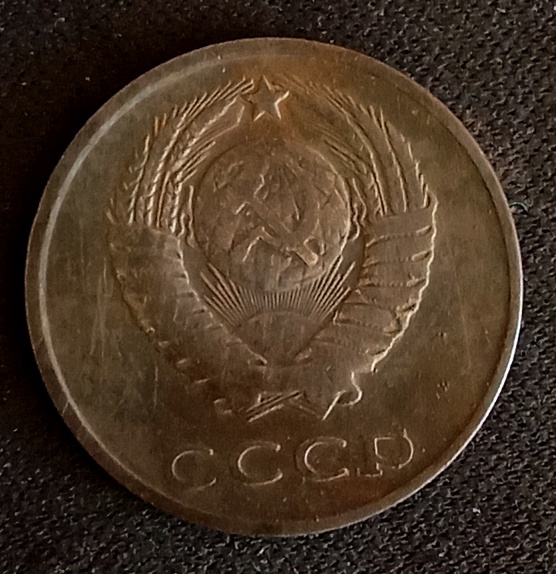 |
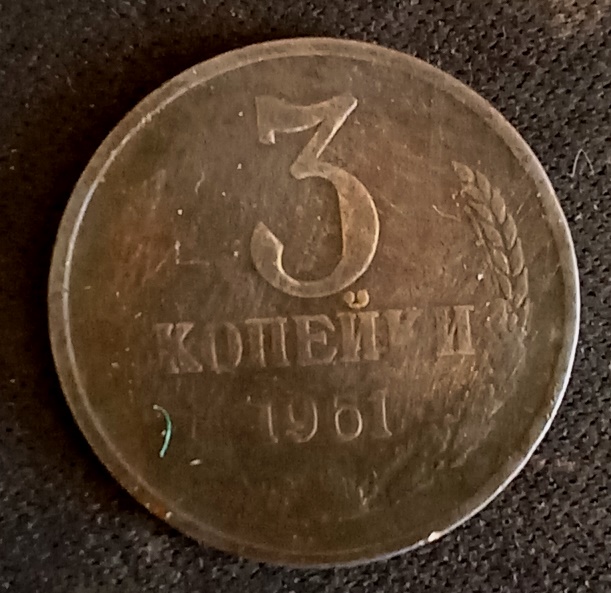 |